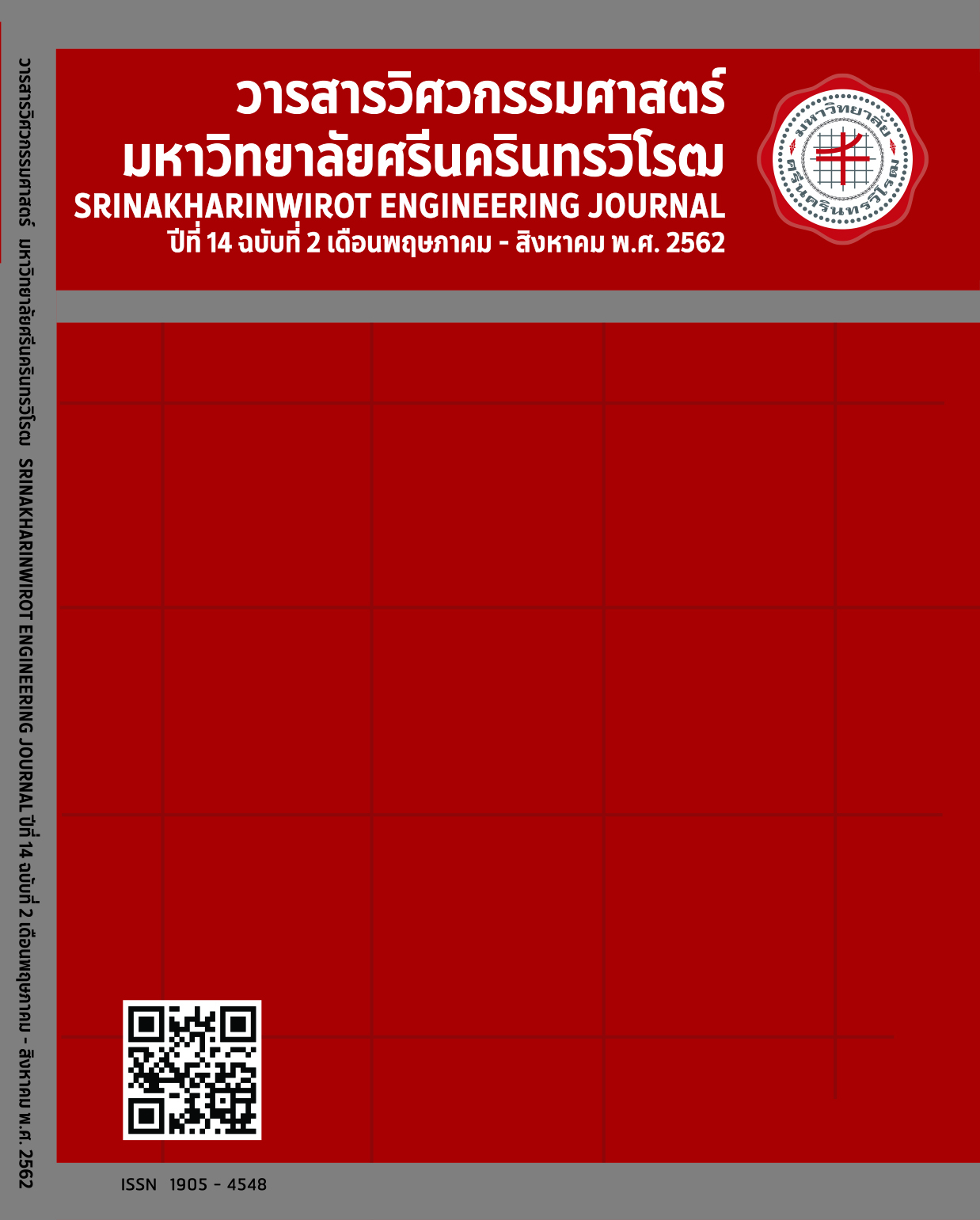Study on Heat and Flow Behaviors in Heat sinks for Thermoelectric Cooling Module by CFD
Main Article Content
Abstract
In this paper, a numerical study on the heat transfer characteristics of various heat sink configurations coupled with thermoelectric cooling module for electronic cooling applications is investigated. Effects of flow channel configurations on the heat transfer and flow behaviors are considered. In the numerical model, the main governing equations of continuity equation, momentum and energy equation are used to analyzed the problem. It can see from the result that the number of fins and size have significant effects on the heat transfer rate which results in thermal performance enhancement. However, the pressure drops also increased. The result obtained from this study are expected to lead to guidelines that will allow the optimum designing heat sink coupled with thermoelectric for electronic cooling applications.
Article Details
Copyright belongs to Srinakharinwirot University Engineering Journal
References
[2] P. Naphon and S. Wiriyasart, “Liquid cooling in the mini-rectangular fin heat sink with and without thermoelectric for CPU,” International Communications in Heat and Mass Transfer, vol. 36, pp. 166-171, 2009.
[3] H.-S. Huang, Y.-C. Weng, Y.-W. Chang, S.-L. Chen, M.-T. Ke, “Thermoelectric water-cooling device applied to electronic equipment,” International Communications in Heat and Mass Transfer, vol. 37, pp. 140-146, 2010.
[4] Y. Zhou and J. Yu, “Design optimization of thermoelectric cooling systems for applications in electronic devices,” International Journal of Refrigeration, vol. 35, pp. 1139-1144, 2012.
[5] L. Zhu, H. Tan, J. Yu, “Analysis on optimal heat exchanger size of thermoelectric cooler for electronic cooling applications,” Energy Conversion and Management, vol. 76, pp. 685-690, 2013.
[6] D. Liu, F.-Y. Zhao, H.-X. Yang, G.-F. Tang, “Thermoelectric mini cooler coupled with micro thermosiphon for CPU cooling system,” Energy, vol. 83, pp. 29-36, 2015.
[7] R. Nebbati and M. Kadja, “Study of Forced Convection of a Nanofluid Used as a Heat Carrier in a Microchannel Heat Sink,” Energy Procedia, vol. 74, pp. 633-642, 2015.
[8] S. Wiriyasart and P. Naphon, “Study on Liquid Jet Impingement Heat Transfer and Flow Behaviors of the Vapor Chambers with and without Mini-channel,” in Conference of Mechanical Engineering Network of Thailand., Nakhon Nayok., 2017.
[9] S. Wiriyasart and P. Naphon, “Thermal Cooling of Electronic Devices with Cold Plate Using Liquid as Coolant,” in Conference of Mechanical Engineering Network of Thailand., Nakhon Nayok., 2017.
[10] Y. Wang, Y. Shi, D. Liu, “Performance analysis and experimental study on thermoelectric cooling system coupling with heat pipe,” Procedia Engineering, vol. 205, pp. 871-878, 2017.
[11] Y. M. Seo et al., “A numerical study on the performance of the thermoelectric module with different heat sink shapes,” Applied Thermal Engineering, vol. 128, pp. 1082-1094, 2018.
[12] S. Wiriyasart and P. Naphon, “Study on thermal performance of cold plate unit with micro-channel for supercomputer cooling,” JP Journal of Heat and Mass Transfer, vol. 15, pp. 77-92, 2018.


